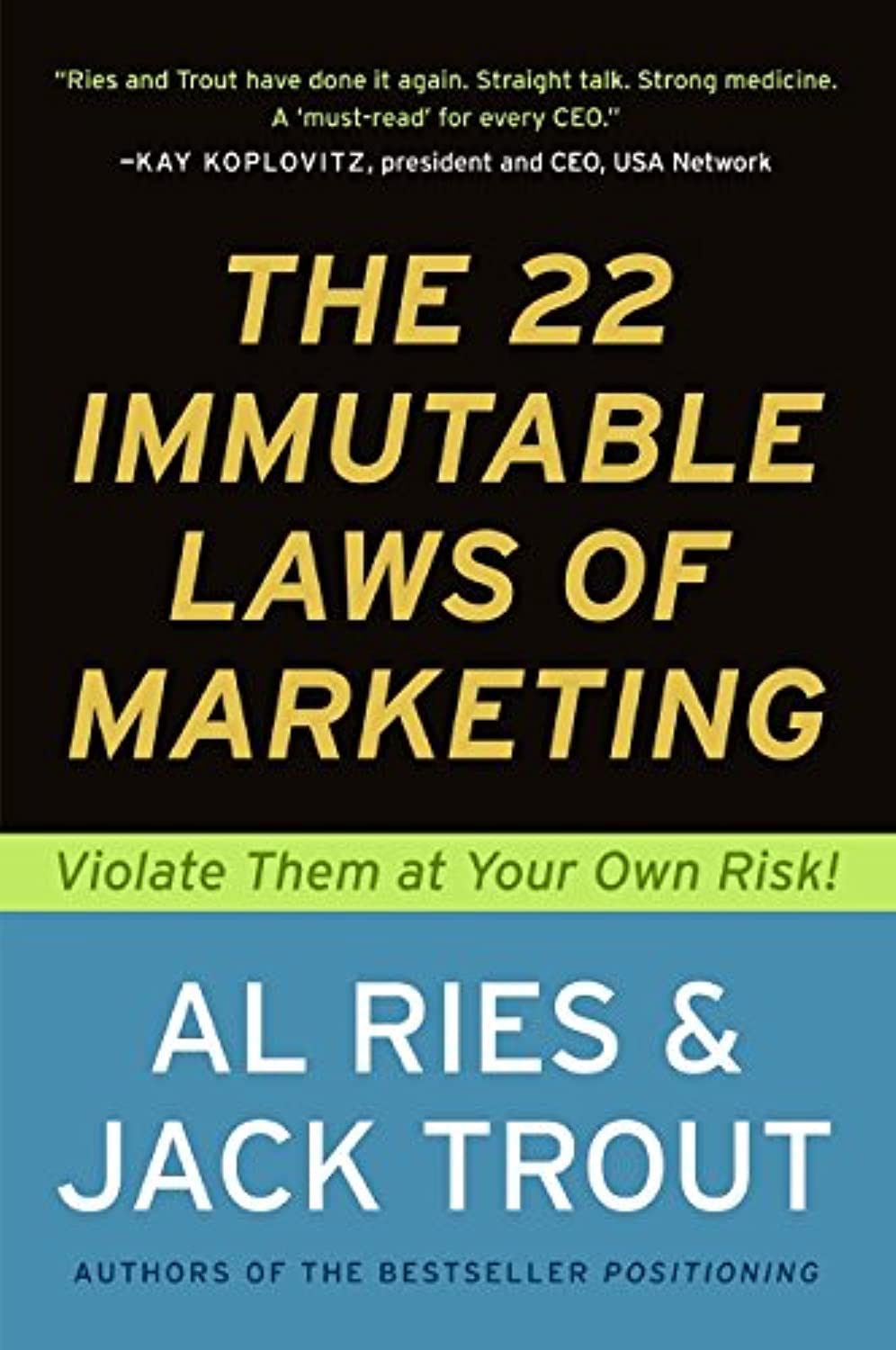The 22 Immutable Laws of Marketing by Al Ries and Jack Trout is a concise, strategic guide that presents 22 fundamental principles for effective marketing. Each chapter is dedicated to one “law,” providing real-world examples to illustrate how these rules have been applied—or violated—by various companies, with corresponding success or failure. The book is structured to give readers a clear and actionable framework for navigating the complexities of marketing.
Overall Thoughts and Writing Style: The writing style of the book is direct and no-nonsense, which aligns well with the authors’ intent to provide actionable advice. The authors avoid jargon, making the content accessible to both marketing professionals and those new to the field. The clarity and conciseness of the writing help to drive home the importance of each law, ensuring that the reader can easily grasp and remember the principles discussed.
Character Development and Literary Themes: While this is not a work of fiction, the “characters” in this book are the companies and brands that Ries and Trout use as case studies. These case studies are well-chosen and effectively illustrate the importance of following the marketing laws. Themes such as the importance of perception over reality, the power of being first in a market, and the dangers of line extension are recurrent throughout the book, emphasizing the strategic focus required for marketing success.
Pacing and Structure: The book is well-paced, with each chapter providing just enough information to explain the concept without overwhelming the reader. The structure, with each chapter dedicated to a specific law, allows the book to be easily digestible and highly practical. The examples are timely and relevant, making the book engaging and informative.
Author’s Use of Language and Imagery: Ries and Trout are skilled at using straightforward language to convey complex ideas. Their use of real-world examples serves as a powerful tool for creating vivid imagery, allowing readers to visualize how the laws apply in real-life scenarios. There are several memorable quotes, such as, “It’s better to be first than it is to be better,” which encapsulate the essence of their arguments.
Emotional Impact and Thought-Provocation: The book is more thought-provoking than emotionally charged. It challenges conventional wisdom and forces the reader to reconsider their marketing approach. The book’s greatest strength lies in its ability to provoke deep thought about marketing strategies and the long-term impact of violating these “immutable” laws.
Themes and Messages: The central message of the book is that marketing success is not just about creativity or budget—it’s about understanding and applying fundamental principles. The authors emphasize the importance of strategic focus and the dangers of overextending a brand. The book also contains social and cultural commentary on how marketing tactics can shape and manipulate consumer perception.
Strengths and Weaknesses: One of the major strengths of The 22 Immutable Laws of Marketing is its clarity and practicality. The authors do an excellent job of distilling complex marketing concepts into simple, actionable rules. However, one potential weakness is that the book’s examples, while relevant at the time of writing, may feel slightly dated to modern readers. Additionally, the rigid nature of the “immutable laws” might not leave much room for adaptation in rapidly changing markets.
Recommendation and Conclusion: I highly recommend this book to anyone interested in marketing, from students to seasoned professionals. Its practical advice and clear guidelines make it a valuable resource. However, those working in rapidly evolving industries may need to consider how these laws apply in a modern context.
Rating: 4.5/5 stars
Overall, The 22 Immutable Laws of Marketing is a must-read for anyone looking to build a solid foundation in marketing strategy. Its timeless principles provide a roadmap for success in the competitive marketing world.
Buy on Amazon
READ ALSO: The 22 Immutable Laws of Branding” by Al Ries and Laura Ries










Leave a Comment
You must be logged in to post a comment